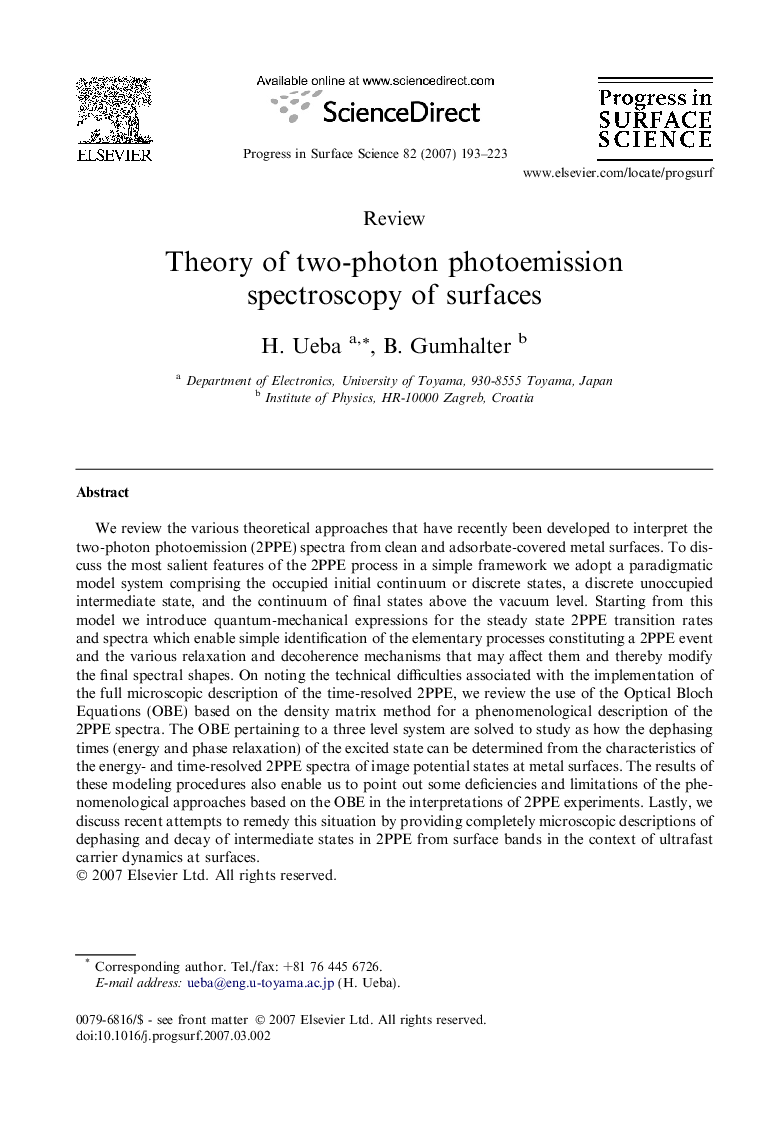| Article ID | Journal | Published Year | Pages | File Type |
|---|---|---|---|---|
| 5420130 | Progress in Surface Science | 2007 | 31 Pages |
Abstract
We review the various theoretical approaches that have recently been developed to interpret the two-photon photoemission (2PPE) spectra from clean and adsorbate-covered metal surfaces. To discuss the most salient features of the 2PPE process in a simple framework we adopt a paradigmatic model system comprising the occupied initial continuum or discrete states, a discrete unoccupied intermediate state, and the continuum of final states above the vacuum level. Starting from this model we introduce quantum-mechanical expressions for the steady state 2PPE transition rates and spectra which enable simple identification of the elementary processes constituting a 2PPE event and the various relaxation and decoherence mechanisms that may affect them and thereby modify the final spectral shapes. On noting the technical difficulties associated with the implementation of the full microscopic description of the time-resolved 2PPE, we review the use of the Optical Bloch Equations (OBE) based on the density matrix method for a phenomenological description of the 2PPE spectra. The OBE pertaining to a three level system are solved to study as how the dephasing times (energy and phase relaxation) of the excited state can be determined from the characteristics of the energy- and time-resolved 2PPE spectra of image potential states at metal surfaces. The results of these modeling procedures also enable us to point out some deficiencies and limitations of the phenomenological approaches based on the OBE in the interpretations of 2PPE experiments. Lastly, we discuss recent attempts to remedy this situation by providing completely microscopic descriptions of dephasing and decay of intermediate states in 2PPE from surface bands in the context of ultrafast carrier dynamics at surfaces.
Keywords
Related Topics
Physical Sciences and Engineering
Chemistry
Physical and Theoretical Chemistry
Authors
H. Ueba, B. Gumhalter,
